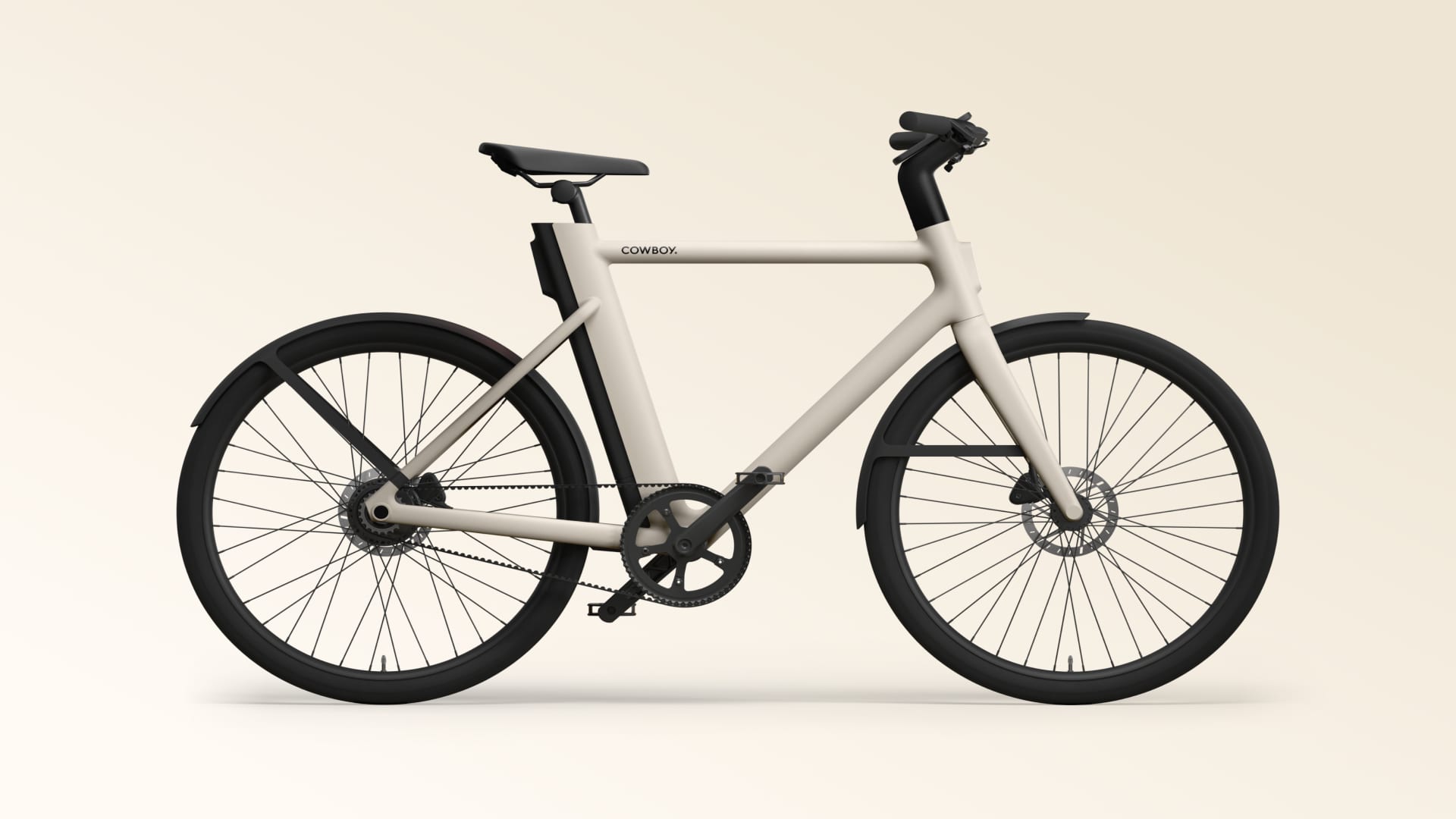Belgian electric bike maker Cowboy is expecting to achieve full-year profitability in 2024, while some of its market rivals are facing financial difficulty.
Cowboy’s CEO and co-founder, Adrian Ruiz, told CNBC that he expects the company to reach profitability on an EBITDA basis by the end of the second quarter and then maintain it through the third quarter. EBITDA refers to earnings before interest, taxes, depreciation and amortization.
According to the firm’s boss, by the third quarter, Cowboy will reach profitability on a full-year basis.
“There are some seasonal things in this business,” Ruiz said in an interview. “Essentially, people tend to buy a lot of bikes in the summer, and not as much in the winter.”
However, he added, “We are confident that, by 2024, we will be EBITDA profitable and cash flow positive on a full year basis.”
EBITDA is a traditional measure of profitability for many technology companies.
Cowboy is a startup that designs electric bikes. It has been called the “Apple of e-bikes” in the past due to the integration of software smarts into its bikes.
Cowboy connects its bikes to an app that allows users to lock them when not in use, track their location, predict battery drain, and get weather updates.

Cowboy also operates as a designer of bikes rather than a manufacturer – it outsources the work of building its bikes to other companies, much in the same way that Apple relies on contract manufacturers like Foxconn to build its iPhones.
Tough times for the e-bike industry
But recently e-bikes have faced a very bad phase in the market.
Changes in supply chain dynamics have led to a situation where many manufacturers now have abundant e-bike stock levels, but demand has declined significantly due to the pandemic surge.
This is a departure from when e-bike companies were struggling for more units in 2021, when consumers were looking for alternative, sustainable modes of transportation and ways to get out during the Covid lockdown.
During that period, customers often faced huge delays in their orders as companies were unable to fulfill them.
“By the time these traffic jams started to become normal, the world was already starting to get to a very different place,” Ruiz said. “Towards 2022 and 2023, there was an overall slowdown in demand.”
“This has created a perfect storm for companies that have ordered extensively and are now facing demand that is slightly lower than expected, and this immediately results in very high inventory levels, shortages of cash and liquidity. “has been translated into a lack of.”
The e-bike industry has been plagued by recent bankruptcies of major players in the sector. In July, Dutch e-bike firm VanMoof filed for protection from creditors. The administrators overseeing the bankruptcy process are exploring several options for VanMoof, including a possible asset sale to a third party so it could continue operations.
Finnish e-bike firm Revonte also filed for bankruptcy and said it was selling its intellectual property.
Roose said his company differs from competitors in that it does not make the bikes itself and therefore has a lower cost limit.
With some competing e-bike companies, “their cost base was very high for their size,” Ruiz said, adding that VanMoof operates with far more employees than Cowboy despite claiming similar rates of revenue. used to do.
long term perspective
Cowboy launched its new cruiser e-bike earlier this year with an upright seating position – known as the “Dutch” riding position.
According to the company, the bike aims to provide riders with “better posture and increased visibility on the road.”
But at a “starting” price of $3,490, Cowboy’s e-bikes aren’t cheap. And on August 1, the company raised prices for its belt-driven “Performance” configuration bikes from $3,490 to $3,790.
E-bike companies have had to be more aggressive in terms of pricing as the tide of venture capital that excited the industry in 2020 and 2021 has exited the market and interest rates have gone higher.

Still, Ruiz said he’s keeping his eye on the long-term potential of e-bikes — driving sustainability with fewer cars on the road — rather than the short-term market outlook.
“Demand for e-bikes in general is really strong and it’s growing year-on-year,” Ruiz said. “Into 2023, there has been a slight slowdown, but in general mid to long-term demand for micromobility is as strong as it has ever been and we are super bullish.”
Revenue from Cowboy’s best-selling models has increased by 38% year-on-year, while its operating costs have declined by 19% year-on-year.
Roose said the company has also increased its margins by 40% — no mean feat for a hardware company — and reduced its losses by 83% this year.
The company secured 13 million euros ($14.1 million) of additional funding in April from its existing institutional backers and crowdfunding investors.
According to Fortune Business Insights, the e-bike market is expected to reach $119.7 billion by 2030 at a compound annual growth rate of 15.6% from 2023, driven by rising crude oil prices and the move toward affordable and eco-friendly modes of transportation.







